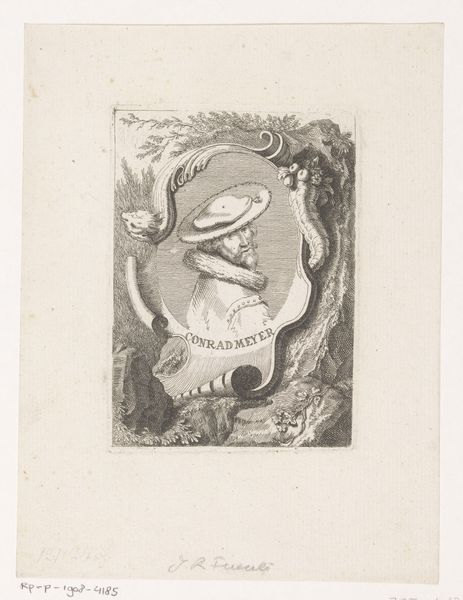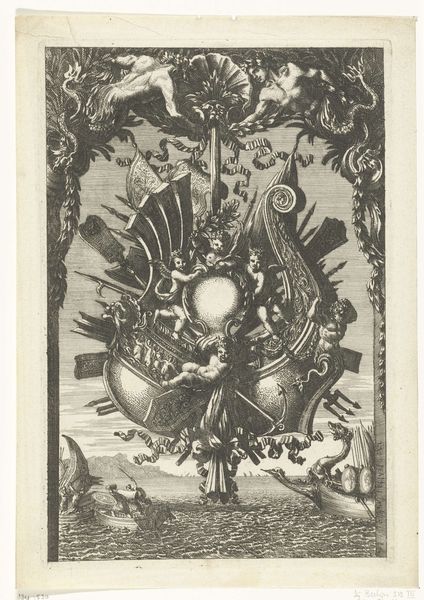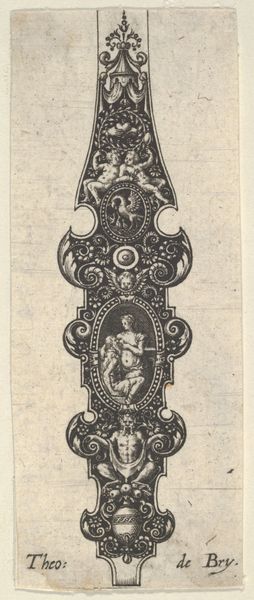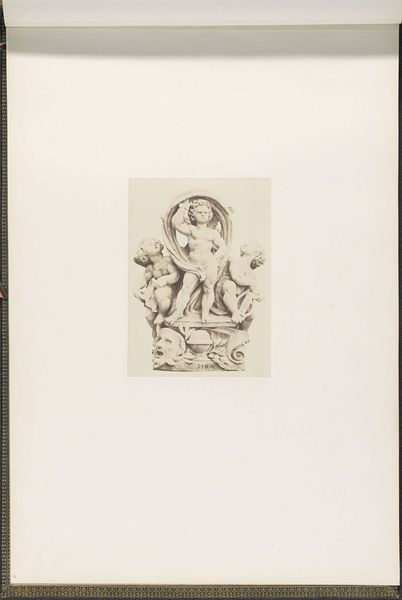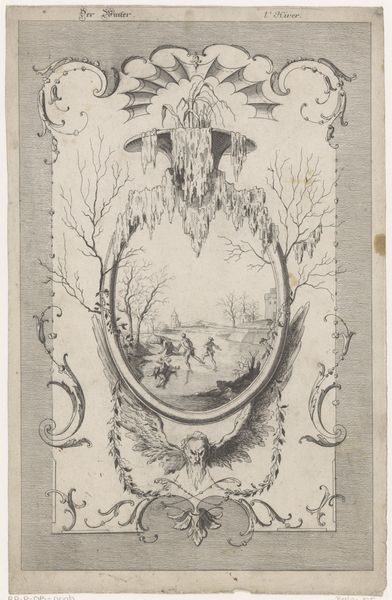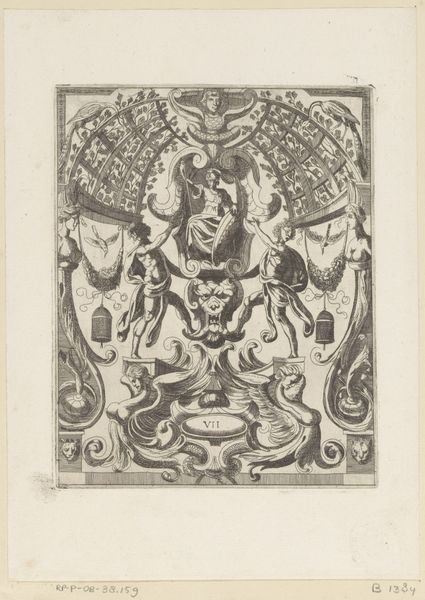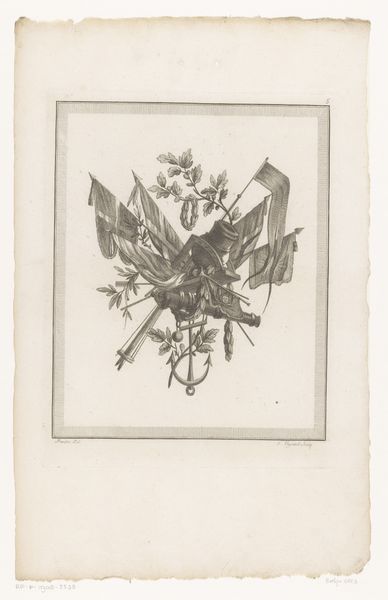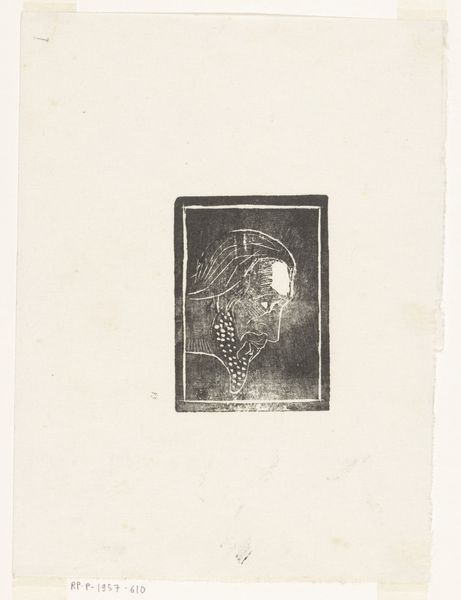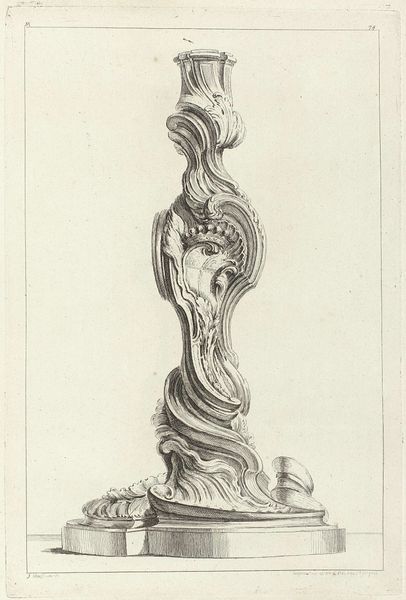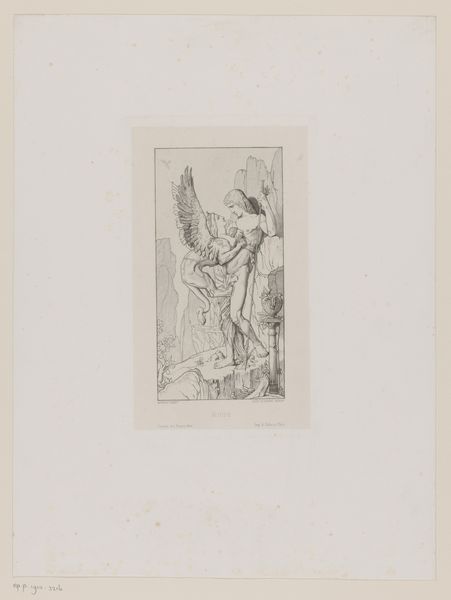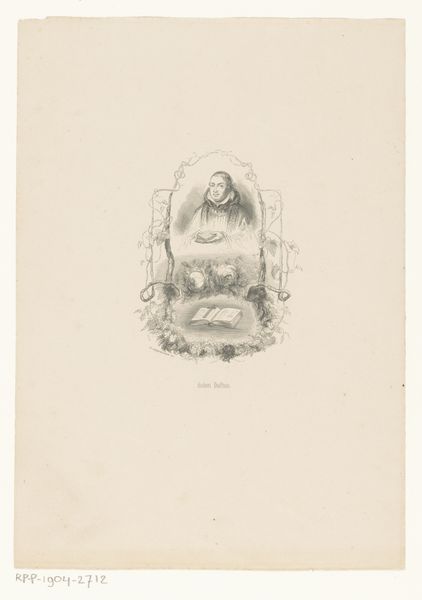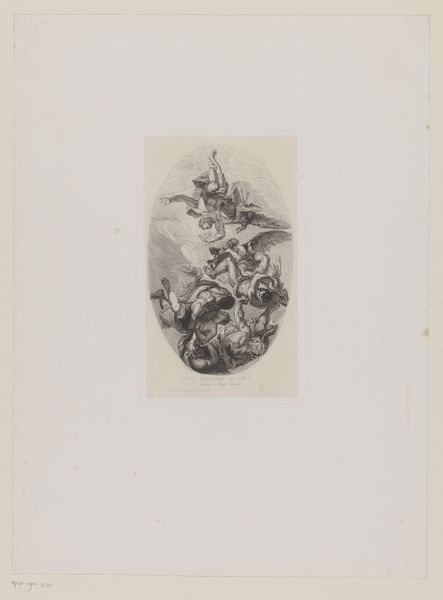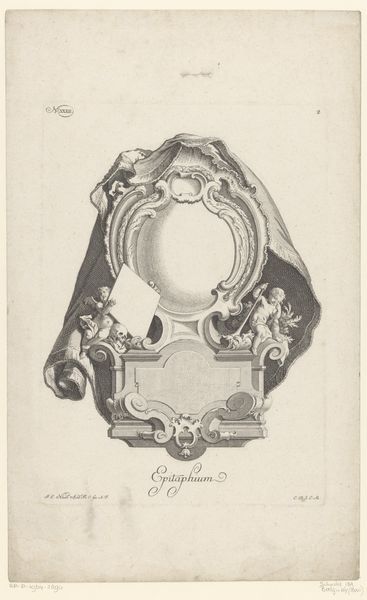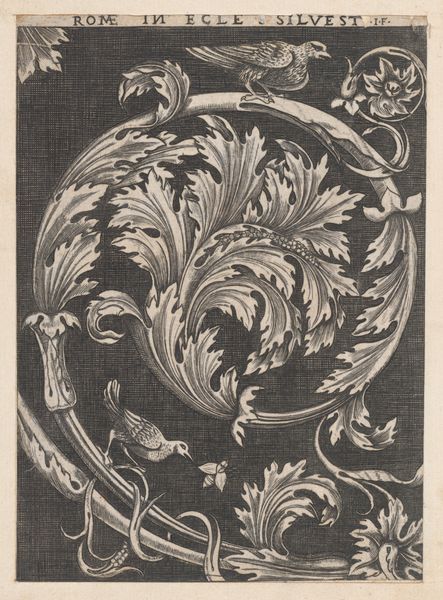
Japans snijwerk met takken en bloemen, mogelijk in jade 1856 - 1897
0:00
0:00
drawing, sculpture, pencil, wood
#
drawing
#
asian-art
#
sculpture
#
pencil
#
wood
Dimensions: height 275 mm, width 184 mm
Copyright: Rijks Museum: Open Domain
Curator: This work presents us with a drawing attributed to Henri-Charles Guérard. It is rendered in pencil and depicts a Japanese carving of branches and blossoms, speculatively fashioned from jade, and dates to the period between 1856 and 1897. Editor: The density of detail almost overwhelms the eye at first. It feels a little claustrophobic, despite the open spaces carved within. Like an object caught between the natural world and the artist's studio. Curator: Yes, that density, achieved through detailed hatching and shading, emphasizes the symbolic weight of such intricate carvings in Japanese culture. These forms reference longevity, and prosperity – elements deeply ingrained in the cultural psyche. The very choice of material, be it jade or perhaps a high quality wood, amplifies the perceived value. Editor: I agree. And there is a tension here too: Guérard is engaging with Japanese art during a period of intense cultural exchange but also, undeniably, imperial expansion. I’m thinking of the broader context, with Japan newly opened to the West after centuries of self-imposed isolation. How did Japanese arts and crafts play in Western markets? Curator: Exactly. These pieces circulated widely at international expositions, contributing to the Japonisme craze. Looking closely, we can see how Guérard uses Western artistic techniques like chiaroscuro to interpret an Eastern artifact. In some sense, his work highlights a moment of artistic appropriation but simultaneously displays cultural fascination. Editor: Right. So it's a drawing *of* a carving but it becomes something else entirely when filtered through the lens of Western art. The meticulous rendering and shading also serve to enhance the aura of authenticity that was often ascribed to imported objects at the time. It played to fantasies about the mysterious East, or the “Orient”. Curator: Indeed. And what do we do with our own desire to categorize art by cultures, East, West etc? I think a work like this urges us to investigate, or perhaps dismantle such boundaries. Here, seeing these botanical motifs that represent both temporal reality and long held traditions, the drawing reminds me of what remains unchanged in our cultural memory through material artifacts, even as their socio-political contexts shift around them. Editor: Precisely, seeing this drawing through an historical lens shows us more than an image. It provides social commentary through form, and calls on viewers to understand more about how objects get turned into cultural symbols in society, and to what end.
Comments
No comments
Be the first to comment and join the conversation on the ultimate creative platform.
